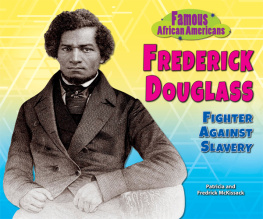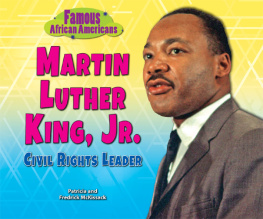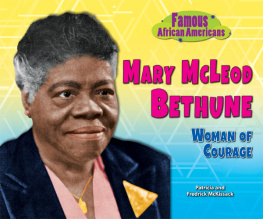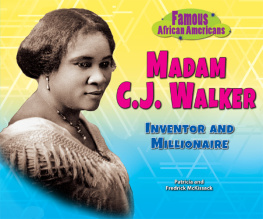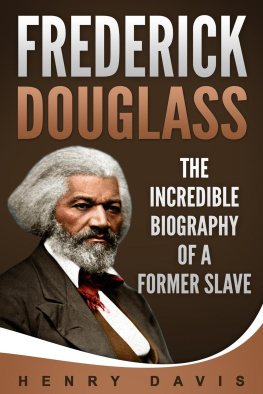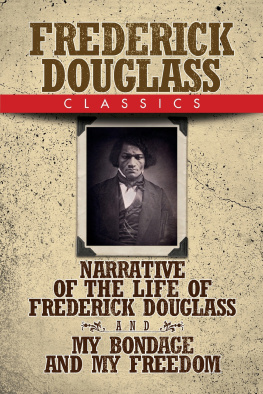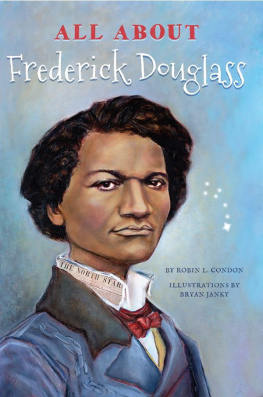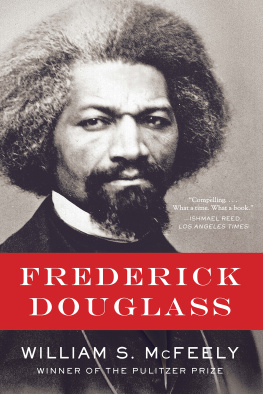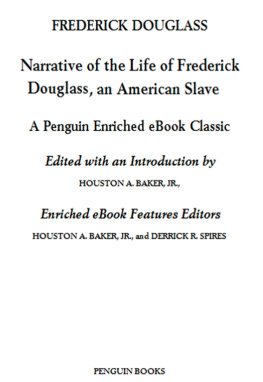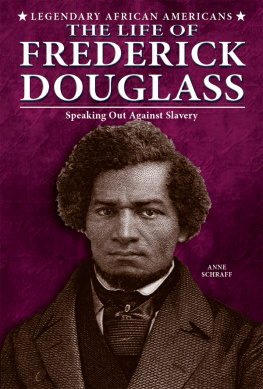FIGHTING FOR FREEDOM
FREDERICK DOUGLASS WAS BORN A SLAVE. HE RAN AWAY TO FREEDOM AND BEGAN SPEAKING ABOUT HOW BAD SLAVERY WAS. HE WROTE A BOOK ABOUT HIS LIFE AS A SLAVE. READ ABOUT FREDERICKS LIFE IN THE FAMOUS AFRICAN AMERICANS SERIES.
ABOUT THE AUTHORS

Patricia and Fredrick McKissack have written over one hundred books about the African-American experience. They have won countless awardsincluding the Coretta Scott King Awardand received much critical acclaim, all the while bringing enjoyment and information to young readers.

Image Credit: Library of Congress
Frederick Douglass was born a slave. When he grew up, he became a powerful voice against slavery.
Harriet Bailey was a slave. All her children were slaves, too. On (or near) Valentines Day in 1817 or 1818, Harriet gave birth to a son. She named him Frederick Augustus Washington Bailey.
When the baby was one week old, Harriet was ordered back to work. But Frederick wasnt left alone. He was sent to live with his Grandmama Betsey and Grandpa Isaac.
Little Fred didnt see his mother very much. She worked far away. Fred was happy until he was about eight years old.
At that time Grandmama Betsey took him to the main plantation, in Tuckahoe, Maryland. She had been told to leave him there. Why, why? he cried.
The boy didnt understand slavery. Slaves had to do what their masters said.
The cook took care of all the children at the main plantation. She was a slave, too. Still, she beat young Fred when he cried.
One day the cook was going to beat Fred. But Harriet came in. Never hit my child again, the angry mother said. The cook ran out of the room.
Harriet hugged her son. She fed him. She sang to him. Then it was time for her to go. Harriet had to do what her master said.
Fred never saw his mother again. Harriet died soon after that visit.
Fred was alone.

Image Credit: Ned O.
Freds mother was very upset when she saw the cook hurting her son.

Image Credit: Ned O.
Fred learned how to read from his masters wife. Most slaves did not know how to read.
Fred lived at the main plantation for a year. The cook beat him almost every day.
Then Fred was sent to be a house slave for Sophia and Hugh Auld.
Sophia Auld was a kind woman. She taught her son and Fred how to read and write.
Then one day Fred read for Hugh Auld. Mr. Auld was very, very angry. Never teach a slave to read, said Mr. Auld. He wont want to stay a slave.
Mrs. Auld stopped teaching Fred how to read. But Fred didnt stop reading.
When Fred was sixteen, he was sent back to the main plantation in Tuckahoe. Thomas Auld was his master.
Fred wouldnt act like a slave. So Auld sent him to a slave-breaker. Fred was made to work from morning until night. All he had to do was act like a slave. But Fred said, Never! He stayed with the slave-breaker for almost a year.

Image Credit: Ned O.
The slave-breaker whipped and beat Fred. But Fred fought back.
One day Fred fought back. He stopped the slave-breaker from beating him. Auld and the slave-breaker had tried to make Fred a willing slave. Now they knew that it would never work.
Thomas Auld sent Frederick back to Hugh and Sophia. By that time, Fred knew that he was going to run away.
It was 1838. Frederick was eighteen years old and very good-looking.
He met Anna, a free black woman who lived in Baltimore, Maryland. He loved Anna and wanted to marry her. But Frederick wouldnt asknot until he was free, too.
Freedom was always on his mind. He wanted to run. Run! Run! His friends said wait. He needed a plan.
After many months of planning, Frederick was ready to run. At last the day came. Dressed as a free sailor, he rode a train to Delaware. Blacks who were not slaves had to carry special paperscalled free papersall the time. Fredericks free papers belonged to a friend. If anyone checked, he would be in trouble. But no one checked closely.

Image Credit: Library of Congress
This sheet music shows Frederick Douglass as he ran from Maryland to freedom.

Image Credit: Anna Murray Douglass, My Mother As I Recall Her 1900, frontispiece
Fredericks wife Anna was born free. She helped Frederick to be free also.
Then, from Delaware, Frederick took a boat to Philadelphia. Run, Fred, run! From Philadelphia, he went to New York. Run, Fred, run!
On September 4, 1838, Frederick was in a free state. He changed his name to Frederick Augustus Douglass. He hoped slave catchers would not find him.
Right away, he sent for Anna. They were married in New York. Soon, the happy couple moved to New Bedford, Massachusetts. Frederick got a job working on ships.
Soon he joined the abolitionists. These were people who wanted to end slavery. Frederick spoke out against slavery all over the North. He even wrote his own life story.
Then he had to run again. Slave hunters would be coming to take him back to his master. Frederick said good-bye to his family and hurried to England.
Two years later, on December 5, 1846, Frederick was truly freed. Friends had bought his freedom. He came back to the United States in 1847 with his own free papers. He never had to run again.

Image Credit: Library of Congress
Everywhere he went, Frederick spoke out against slavery. The North Star was his anti-slavery newspaper.

Image Credit: Library of Congress
Frederick founded the North Star in December 1847.
Frederick Douglass was a free man. But what about all those who were still slaves? He believed all people should be free. That would be his lifes work.
The Douglasses moved to Rochester, New York. There, Frederick started the North Star, a weekly newspaper. The North Star was the light in the sky that runaways

